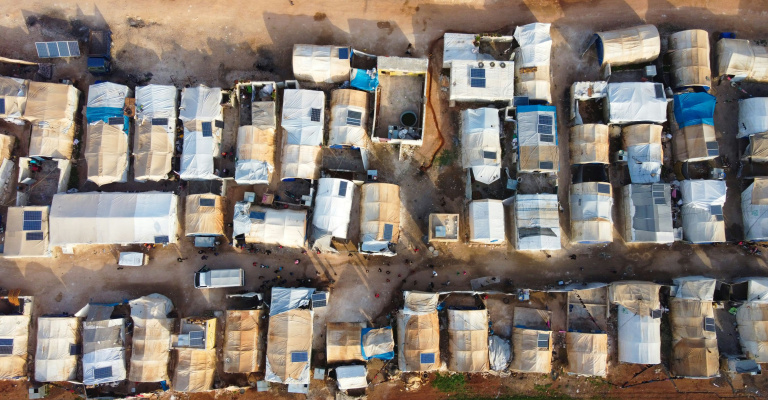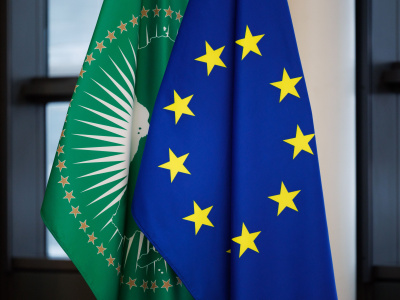
Beyond summit rhetoric: A smarter AU-EU vision on migration
From summit to summit, Africa and Europe continue to endorse regional and continental cooperation on migration. The declaration of the 7th AU-EU summit further strengthened this approach, but in practice, the EU works more on a bilateral and transactional level. Transactions will stay, but the cooperation needs to be smarter: this means that continental frameworks set the direction and coherence, while bilateral deals deliver on their implementation to overcome fragmentation and distrust.
Shifting from rhetoric to results
It is not a surprise that AU and EU leaders adopted a dedicated section on ‘An enhanced and reciprocal partnership for migration and mobility’ at the 7th summit in Luanda. The text largely restates earlier commitments of the Joint Vision for 2030 but adds more operational detail and rebalances certain approaches. The declaration promises “comprehensive, tailor-made and mutually beneficial partnerships” on irregular migration, returns, border management and anti-smuggling, while at the same time committing to expand legal pathways (especially for students, academics and researchers), to improve recognition of qualifications, and to tackle brain drain through circular migration. It gives greater visibility to African migration institutions and regional dialogues and explicitly links diaspora contributions and remittances to the AU-EU migration agenda – a shift from the previous predominant focus on irregular migration and return.
Despite the lasting formal agreements on migration between Europe and Africa, recent EU engagements have been more bilateral and transactional. In particular, partnerships with transit countries and origin countries like Tunisia, Egypt and Mauritania have become the main channel for external migration policy – a development that has to some extent sidelined regional diplomacy.
Formally, the AU-EU architecture on migration is still alive, as are the continental and regional ones. Regular regional dialogues, such as the Khartoum and Rabat Processes, continue to convene, and the AU Commission’s Department of Health, Humanitarian Affairs and Social Development maintains working-level engagement with the European Commission, for example, through the commission-to-commission meetings on migration and development. Initiatives such as the AU’s Free Movement Protocol and the African Continental Free Trade Area (AfCFTA) embed mobility into wider economic development. The Luanda summit reaffirmed this architecture, tasking both sides with strengthening follow-up and coordination. But the problem is not institutional absence, it is that political and financial energy have shifted elsewhere.
Balancing national sovereignty with regional strategy
Migration governance remains a matter of national sovereignty. Decisions on recruitment, return and border management rest firmly with individual states. This reality makes bilateral and mini-lateral deals attractive as they deliver visibility and short-term results, but risk weakening continental coherence and collective bargaining power. In such a context, regional coordination may be marginalised not because it lacks purpose, but because existing power and incentive structures favour direct bilateral delivery.
Yet, this sovereignty reality does not render regional diplomacy irrelevant. For both the AU and EU, the added value of the continental level lies less in executing migration control but more in setting strategic directions and ensuring coherence across a growing number of bilateral arrangements. Without such coordination, African and European countries risk operating in a fragmented landscape marked by competition, incompatible systems, misaligned labour and skills policies. With it, both sides can negotiate from a more stable and predictable position and link bilateral initiatives to wider economic, mobility and investment agendas.
Even in a world driven by short-term interests rather than longer-term ones, the AU-EU partnership benefits when both sides organise collectively rather than negotiate in isolation.
Why collective action matters
Even in a world driven by short-term interests rather than longer-term ones, the AU-EU partnership benefits when both sides organise collectively rather than negotiate in isolation. At the continental or regional level, partners can set common benchmarks (be it on ethical recruitment, skills recognition, data protection, or mobility governance) that individual governments can still adapt in bilateral negotiations.
For African states, such continental frameworks avoid fragmentation and strengthen their negotiating and bargaining position with the EU. Smaller nations or less-resourced states, in particular, benefit from acting collectively and having access to shared technical and diplomatic capacity they may otherwise lack individually. As a result, continental coordination enables African governments to shape cooperation with the EU more strategically and on more predictable terms. In a context where European coordination already gives the EU significant bargaining power, a more coherent African position would not only level the playing field but also create a more stable and strategic basis for AU-EU cooperation.
For Europe, engaging at a regional level enables migration and mobility to be linked to wider cooperation agendas such as investment, education, digitalisation and the green transition, rather than treating them as isolated or reactive issues. This matters politically because it helps normalise migration within the AU-EU relationship and reduces the media-driven volatility that has so often undermined trust.
Towards smarter, not more, cooperation
A stronger strategic AU-EU dialogue could align talent partnerships, recognition of qualifications, and green-skills mobility with regional investment and industrial policies. These linkages already exist in practice but remain unconnected in governance. Joining them up would embed migration more firmly in both continents’ economic planning and competitiveness strategies. The AU can also help reinforce policy coherence within Africa itself, linking free movement commitments under the AfCFTA with regional labour market needs and human capital investment.
In short, the goal should not be more regional cooperation as an end in itself. It should be smarter cooperation, where continental frameworks set direction and coherence, and bilateral deals deliver implementation. The Luanda summit underlined this ambition, but the hard work is left for later. And without real follow-through, the next summit will restate the same principles again. Ultimately, migration governance in Africa and Europe will remain transactional, but transactions can be guided by strategy.
The views are those of the authors and not necessarily those of ECDPM.




